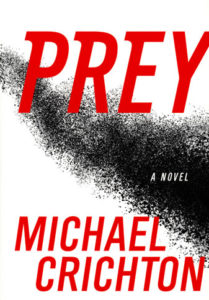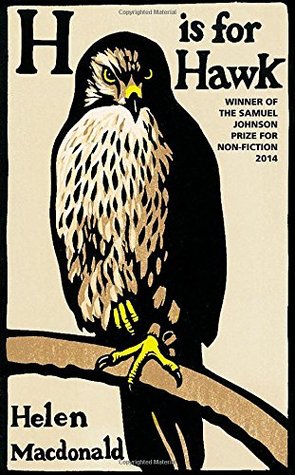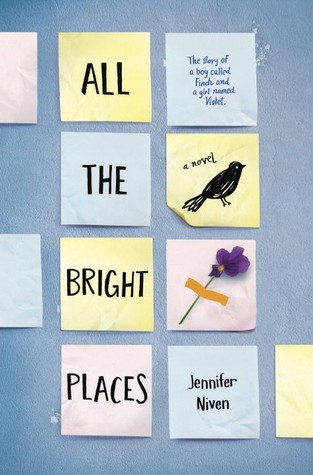Whether you’re staying in from the rain or lounging in the sun somewhere far away, a good book is a versatile companion for your first month of summer.
 Prey by Michael Crichton
Prey by Michael Crichton
by Haley Mitchell, managing editor
Imagine a Michael Bay film as a book, and it still wouldn’t come close to this masterpiece. Crichton’s success with Jurassic Park unfortunately overshadows the dozens of other thrillers he’s written, including my new favorite, Prey. Facing the anxieties of his failing marriage, everyman Jack Forman is pulled into his wife’s work fiasco when he learns that she has unintentionally released a cloud of self-reproducing nanobots into the Nevada desert. Every passing hour marks another evolution in the self-sustaining technology, and it is only a matter of time before Jack realizes that his battle against intangible foes may be misguided. Crichton’s flawlessly intricate plot is a whirlwind of paranoia, excitement, and oh-my-gosh-it-may-be-two-a-m-but-I-have-to-finish-this-chapter thrills that made me question everything I thought I knew about the world around me.
H is for Hawk by Helen Macdonald
by Jennifer Zhan, senior editor
Helen Macdonald’s latest novel is a thought-provoking, often heartbreaking masterpiece. Don’t be fooled by the fact that it’s nonfiction— H is for Hawk isn’t some sort of instructive guide on how to train birds of prey. Although the plot does revolve around Macdonald’s journey to create a relationship with her goshawk, the book isn’t really about how she did it. It’s about why. It’s the story of a woman who wants to remove herself from humanity, a story of loss and love. Macdonald weaves the pasts of others with her own experiences, drawing profound conclusions about what it means to be alive.
She narrates the book with a painfully honest voice— sometimes passionate, sometimes vulnerable, always raw. It’s captivating how she commands words to create passages that are both delicate and fierce. The novel is well-deserving of the prestigious awards it has garnered over the past year. There’s no doubt that H is for Hawk will continue to fly off the shelves as fast as the birds it features.
 All the Bright Places by Jennifer Niven
All the Bright Places by Jennifer Niven
by Emily Caldwell, staff reporter
All The Bright Places, a novel author Jennifer Niven to some degree based on her own experiences, starts off with the two main characters, Theodore Finch and Violet Markey, meeting on the top floor of the school bell tower, both standing on the ledge looking over, unsure if they want to jump. Told through both character’s perspectives throughout the book, the reader soon learns that both Finch and Violet have had to endure tragedies and hardships that no teenager should be forced to deal with, in Finch’s case, an abusive father and a mind he must call his own but doesn’t understand himself, and in Violet’s case, the death of a sister. Throughout the book, Violet and Finch, despite all odds, become very close, with Finch offering Violet an escape from her life that just can’t ever be the same after her sister’s accident, and with Violet causing Finch to focus less on his pain and more on his pursuit of happiness. But as Violet recovers, Finch deteriorates.
As an avid shopper of the Barnes & Noble teen romance section, I can attest that when I first picked up this book off the shelf I was not looking for or even expecting a heartbreak; I was looking for the opposite, in fact. I recommend this book, but not because it made me happy or because it was fun to read. I recommend it because it slapped me in the face with reality, and that slap left a mark.

Boy, Snow, Bird by Helen Oyeyemi
by Rachel Swartz, staff reporter
Helen Oyeyemi’s novel first takes place in the early 1950’s of the Lower East Side of New York City. A young white woman, known as Boy Novak, is shown packing her belongings and privately running away from her abusive and controlling rat-catcher father. She relocates to Flax Hill, a compact town pinpointed in Massachusetts, where she meets a local widower identified as Arturo Whitman, a history professor-turned-jewelry maker. Boy marries Whitman, becoming attached to Arturo’s seven-year-old daughter, Snow. Boy and Arturo soon have a daughter of their own, Bird. They immediately notice that Bird’s skin is prominently “colored”. Boy comes toward the light with Arturo explaining that he came from a line of white-passing African Americans, giving way to Bird being looked down upon by others in their neighborhood.
Oyeyemi’s writing harmonizes to high-spirited and joyful places lifting up onto cloud nine, despite displaying the fearful bits and pieces of the Snow White counterpart as well as that of the wicked stepmother. Besides the somber sides of the myth-like work of fiction, Oyeyemi reflects on other issues, essentially identity, race, ethnicity, and gender. Boy, Snow, Bird is a favorable read for those who believe in the enchanting reflection of fairytales.

